Micronized barite fluid helps Brazilian well walk narrow drilling window
Treated oil-based system also increases signal strength for MWD tools during offshore field trial in 8 ½-in. interval
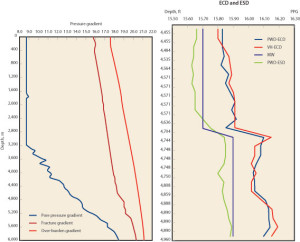
By Ramy Mahrous and Marcus Sobrinho, M-I SWACO; Bruno Pacheco Montoto, Schlumberger; J. Thomas Goncalves, Petrobras
Drilling highly inclined wellbores poses two key challenges for operators: avoiding nonproductive time (NPT) from drilling fluid and well control issues, and ensuring ample signal strength for measurement-while-drilling (MWD) tools that guide decision-making at the surface.
These dual challenges were met in a field trial conducted by Schlumberger and Petrobras using the M-I SWACO WARP oil-based treated micronized barite drilling fluid system (OB TMB) in the 8 ½-in. interval in a well offshore Brazil.
The OB TMB demonstrated its benefits over conventional oil-based drilling fluids (OBM), particularly in narrow operating windows where pressure that’s too low can allow an influx of formation fluids into the annulus and pressure that’s too high can exceed the fracture gradient. Either extreme can lead to complications and well control issues that jeopardize drilling operations and efficiency and raise costs.
The OB TMB also helped ensure stronger signals for the Schlumberger TeleScope high-speed telemetry-while-drilling service that transmits downhole data as mud pulses to be used for real-time data acquisition, geosteering and formation evaluation.
With the ever-increasing need to drill deeper wells and the corresponding complications from higher pressures and temperatures, it is imperative that operators employ a drilling fluid system that can handle extreme conditions. Drilling fluid and equipment must work in concert in adverse downhole conditions to prevent fluid influxes and ensure wellbore stability while cooling and lubricating the bit and carrying cuttings out of the hole.
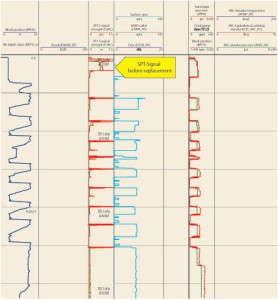
Barite effect
For a drilling fluid density of 2.0 g/cu cm(16.7 lb/gal), 33% to 35% of drilling fluid volume is barite. At this high loading level, barite has a major impact on the rest of the drilling operation. But API-grade barite and alternative high-density weighting agents have a tendency to settle and separate from the fluid. The particle size of the weighting material greatly affects susceptibility to this sagging.
The smaller the particle size, the easier to suspend the particle in a fluid and avoid barite sag. OB TMB was designed to mitigate sag. Its extremely small particle size, in which the majority of particles are less than two microns in diameter, enables the formulation of low-rheology OBM with low risk of barite sag compared with fluids formulated with API-grade barite up to 75 microns.
The larger surface area of the ultra-fine particles would normally adversely affect fluid rheology. The special treatment these particles have undergone diminishes the high-viscosity impact of numerous fine particles in the drilling fluid.
Proper planning of the drilling program, including the selection of drilling fluid, is also a main concern when evaluating the signal strength of downhole tools. Proper choice of drilling fluid can help improve overall signal strength. Weak signal strength is a major problem in deep drilling worldwide as it affects steering and formation evaluation data.
The high-speed telemetry-while-drilling service uses a modulator to generate a small pressure variation in the mud flow, creating binary codes received by a signal pressure transducer (SPT) and converted to data by the acquisition system. From increased signal strength, the acquisition system and the high-speed telemetry-while-drilling service configuration can be properly adapted to reach maximum potential in the telemetry area and improve the capabilities of real-time steering and formation evaluation.
The signal bandwidth is determined by programming the high-speed telemetry-while-drilling service based mainly on expected logging speed and signal strength. The center of this bandwidth is the carrier frequency in which the transmitted signal varies from 0.5 Hz up to 24 Hz. Faster transmission rates require higher frequencies, as well as bandwidth increases. The acquisition system is programmed to encode and process all the data in a specific bandwidth.
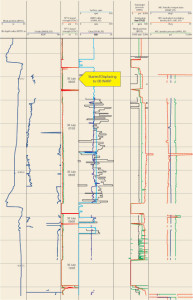
As a result, stronger signal strength with the correct drilling fluid system is crucial to increase the overall signal-to-noise ratio. There are several types of noise, including pump noise and downhole noise. Regardless of which pulse generation setting is used – negative pulses, positive pulses or continuous pulses – the main external factors that influence the MWD signal are related to the drilling fluid. These include rheological properties, mud weight, well depth, flow rate, noises and drilling fluid condition. The more viscous and denser the drilling fluid, the harder it is for the pressure pulse to be generated to reach the surface sensors. The deeper the well, the more difficult it is to get an accurate and strong signal due to the distance between the signal transmitter and its receiver. The higher the flow rate, the bigger the pressure drop across the modulator, ending with stronger pressure pulses.
Drilling fluid condition can be broken down into small variables within the drilling fluid, including homogeneity and gel strength. These two properties require circulation time and proper fluid control.
The more homogeneous the drilling fluid, the easier it is for the pressure pulses to be transmitted to surface, but gel strength creates difficulties for pulse generation. The gel strength needs to be broken down, and circulation needs to occur before the signal strength can be evaluated.
Field trial
A field trial with the OB TMB was carried out in the 8 ½-in. interval on a well offshore Brazil. A major objective was to demonstrate the benefits of using the WARP OB TMB over conventional OBM and ensure the section was completed without drilling fluids-related NPT.
The 8½-in. section had a narrow operating window in pressure extremes that could allow an influx of formation fluids or exceed the fracture gradient, either scenario leading to drilling fluids and well control issues.
The maximum equivalent circulating density (ECD) could not exceed 0.5 lb/gal above the surface drilling fluid density with a flow rate of 350 gal/min. The possibility of fracturing the formation, leading to loss circulation, made it critical to optimize fluid properties and performance and to stay within the narrow operating window.
Figure 1 shows the operating window, or the area between the pore pressure and the fracture gradient, for the field trial in Brazil. As depth increases, the operating window narrows and moves to higher pressures.
In keeping with best drilling practices, proper hydraulic simulations should be done during the well planning stage to design drilling fluid properties that maximize fluid efficiency and minimize NPT and related drilling issues. With the OB TMB technology, specific rheology profiles can be designed independent of barite sag potential. The OB TMB section was drilled without sag or hole-cleaning issues.
An additional issue was the depth that weakens signal strength of the MWD tool. However, the operator experienced an increase in signal strength with the high-speed telemetry-while-drilling service, which powered and transmitted data from downhole measurement services, including the StethoScope formation pressure-while-drilling service and the sonicVISION sonic-while-drilling service.
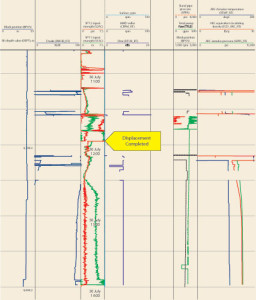
The design of the high-speed telemetry-while-drilling service maximized the amount of real-time information transmitted from the formation pressure-while-drilling and the sonic-while-drilling services to log borehole sections in greater detail.
The high-speed telemetry-while-drilling service transmits data at a given physical telemetry rate with compression algorithms downhole. At the surface, signal detection and noise cancellation methods demodulate extremely weak signals at high telemetry rates to enhance data quality. The service’s downlink protocol enables real-time transmission of information from surface to downhole tools.
Because transmission speeds and configuration settings are easy to change and communication is bidirectional, normal logging and drilling operations can continue during downlinking. The high-speed telemetry-while-drilling service transmits data at rates up to four times faster than the industry standard.
Despite not being used in this particular field trial, the improved signal strength achieved with the WARP OB TMB system allows for the possibility of using the Orion telemetry platform to increase the rate of data transmission. The telemetry platform tool delivers information that can help optimize well placement, improve drilling efficiency, reduce risk and, ultimately, increase production.
An increase in signal strength was achieved when the SPT was able to recognize a 10-fold increase in signal strength from 0.1-0.2 psi to 1-2 psi without signal distortions.
Figure 2 shows the signal strength using the conventional OBM, and Figure 3 shows the beginning of the transition to the OB TMB fluid. Finally, the conventional OBM being displaced by the OB TMB is shown in Figure 4. The green line shows signal strength is now readily apparent on the log.
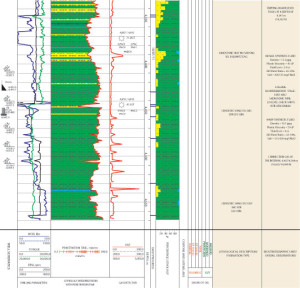
A 50% torque reduction was recorded (dropping from 12,500 to 6,250 lb/ft) when the displacement was completed. The recorded reduction in torque can be attributed only to the OB TMB system because there was no change in lithology. Figure 5 shows the 99% shale formation corresponding to the drilling activity.
Additionally, barite sag was not an issue. Drilling fluids properties were stable and remained within specification throughout the drilled section. Once drilling was established with the WARP OB TMB system, the standpipe pressure was reduced while drilling compared with the conventional OBM using API Barite.
Conclusion
The field test offshore Brazil confirmed the WARP OB TMB over a conventional OBM system with recorded improvements in sag stability, the ability to stay within the narrow ECD window and a 50% reduction in torque, along with an increase in signal strength.
These characteristics make the OB TMB a viable candidate for drilling highly inclined wellbores and other critical wells globally.
WARP is a mark of M-I SWACO. TeleScope, StethoScope, sonicVISION and Orion are marks of Schlumberger.




